 |
| February 09, 2021 | Volume 17 Issue 06 |
Designfax weekly eMagazine
Archives
Partners
Manufacturing Center
Product Spotlight
Modern Applications News
Metalworking Ideas For
Today's Job Shops
Tooling and Production
Strategies for large
metalworking plants
Sikorsky-Boeing unveil updated advanced assault helicopter: DEFIANT X
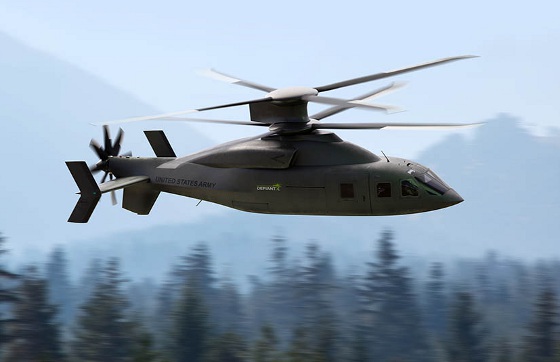
All images are of DEFIANT X. [Images courtesy: Boeing/Sikorsky]
A development partnership between Sikorsky and Boeing has released new details of its advanced helicopter for the U.S. Army's Future Long Range Assault Aircraft competition (FLRAA). Named DEFIANT X, the coaxial rotor aircraft aims to be the fastest, most maneuverable, and most survivable assault helicopter in history. DEFIANT X is an updated/modified version of the team's SB-1 Defiant, which had its first flight in March 2019.
With its two coaxial main rotors and rear-mounted, all-electric pusher propulsor, the single-engine DEFIANT X is unlike production rotorcraft available today. It represents what its designers think is a leap forward in technology to achieve the U.S. government's desire for vast increases in speed and range, while improving maneuverability and survivability in a cost-effective way.
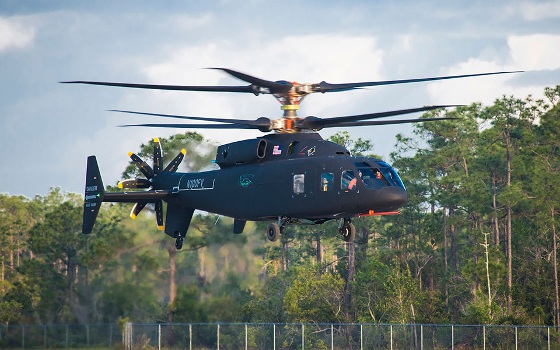
Boeing says, "DEFIANT X will fly low and fast through complex terrain, land quickly, deliver soldiers and equipment to the objective area (referred to as 'the X'), and get out."
"Defiant is designed to fly at nearly twice the speed and has twice the range of conventional helicopters while retaining the very best, if not better low-speed and hover performance of conventional helicopters," said Dan Spoor, vice president, Sikorsky Future Vertical Lift, back in June 2020 when the SB-1 Defiant was being put through extra testing. "This design provides for exceptional performance in the objective area, where potential enemy activity places a premium on maneuverability, survivability, and flexibility."
The U.S. Army has a stated goal to replace the UH-60 Black Hawk helicopter in fiscal year 2030. The DEFIANT X is one of two designs being considered as replacements in the FLRAA program as part of the Army's Future Vertical Lift (FVL) initiative, the Army's No. 3 modernization priority area.
The winning design will be required to blend airplane-like speeds with helicopter-like maneuverability. The aircraft will need to maintain 100% maximum continuous power, medical evacuation capabilities, and (per guidelines) have the ability to perform a 500-ft-per-min. vertical rate of climb. It will have to soar at 6,000 ft in 95-degree heat, with up to 12 passengers and for roughly 1,725 nautical miles one way without refueling. The program's objective cruise speed is 280 knots, or roughly 320 mph.
Bell Textron's part-aircraft, part-helicopter design called the Bell V-280 Valor is the other contender. So far, Valor, which sports two transformational tiltrotors, has flown at speeds around 200 knots (230 mph) in testing. It includes a fly-by-wire flight control system.
On a flight test last year, the SB-1 Defiant demonstrator proved it was faster than the long-in-service Black Hawk by reaching 205 knots (236 mph).
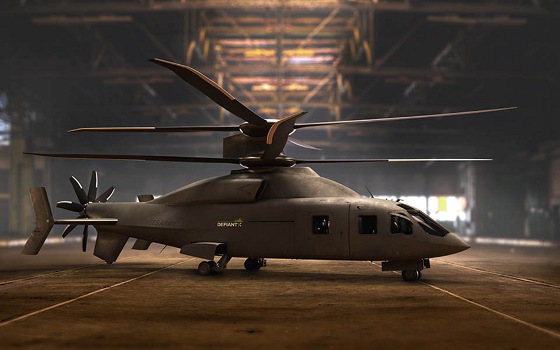
The Sikorsky-Boeing DEFIANT X is counting on its X2 Technology (counter-rotating blade) design to make it the U.S. Army's top choice due to its scalability to a variety of military missions such as attack and assault, long-range transportation, infiltration, and resupply.
X2 was first developed on Sikorsky's two-seater XH-59A prototype, which made significant improvements in vibration reduction, weight reduction, and blade technology. It boasts improved hover performance, rapid maneuverability, and crisp control response due to the rigid rotor -- all while maintaining helicopter-like performance at low speeds.
The X2 Technology is also used in the smaller Sikorsky RAIDER X demonstrator, a high-speed scout and attack compound copter that has already proven a maximum cruise speed of 253 knots (291 mph). Sikorsky Chief Test Pilot Bill Fell said back in 2019 that the low- and high-speed maneuverability of an X2 Technology flyer -- which can fly at as much as 60-plus degrees of bank -- and the ability to hover in high altitudes and hot conditions "make a helicopter fly more like a tactical jet aircraft than a classic rotorcraft."
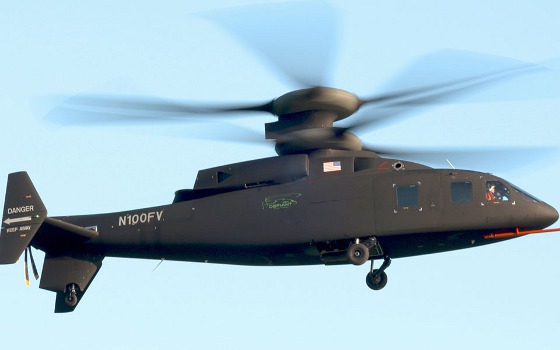
The DEFIANT X can hold a crew of four. It has fly-by-wire flight controls, manually foldable blades to reduce space requirements during parking, a composite fuselage, and retractable landing gear.
Jerry Drelling, a Boeing spokesperson, told Designfax exclusively that the DEFIANT X differs from the SB-1 Defiant in some important ways. One feature is a combat-ready weapon system designed to the Army's new mission set, including:
- Enhancements to the design to reduce thermal signature and improve aerodynamic handling;
- Tricycle-design landing gear, which improves stability and landing and taxiing in combat and austere environments;
- Changes to the exhaust system, reducing thermal signature; and
- An integrated mission systems package enabling joint all-domain operations (JADO) and, through modular open systems approach (MOSA), continued upgrades to combat an ever-changing/evolving threat and system to maintain relevance in the 2035 battlefield.
Drelling added that the aircraft also features enhanced maneuverability and survivability, which includes fly-by-wire flight controls integrated with an autonomy capability, which lead to safety and workload reduction for the crew and operations in complex and degraded visual environments.
Drelling also pointed out that the DEFIANT X is designed for growth. It's "the only FLRAA solution that can do external lift missions at an operationally relevant distance, which gives the Army increased capability and operational flexibility," he said. Also, "The aircraft can handle additional weight without having to grow the rotor diameter or the engine size. So, any additional equipment, survivability features, payload (including external lift) can be handled without a significant and costly redesign of key dynamic components."
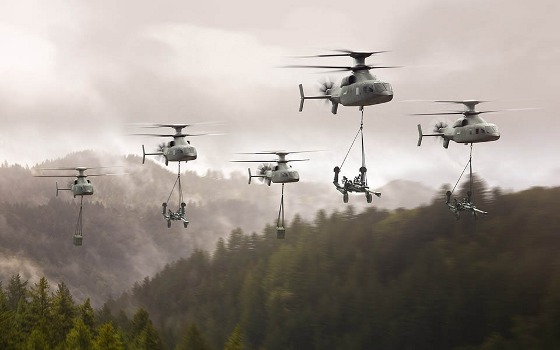
According to a Jan. 25, 2021, Defense News article, "The 'enhancements to the [DEFIANT X] design' are born from roughly 1,500 hours running algorithms in a systems integration lab, 135 hours logged in the Propulsion Systems Test Bed, and 31 flights, adding up to 26 hours of flight time."
According to a Feb. 26, 2020, article on Business Insider by Matthew Cox of Military.com, "Test pilots on Defiant [SB-1] said they love the [electric] rear pusher prop, which is designed to provide revolutionary thrust, but are also comforted that it can take direct hits in combat without causing catastrophic failure to the aircraft."
The article also says, "The pusher prop can also be reversed very quickly to provide negative thrust for quick braking power, and then turned off for a quieter sound signature."
The U.S. Army has stated no official date for the downselect of the final, winning design, but fiscal year 2022 has been mentioned in several reports as the soft target. The technological readiness of both competing designs as well as evolving military budgets will influence the final selection timeline.
Sikorsky is a Lockheed Martin Company.
Learn more about DEFIANT X at boeing.com/defiantx.
Sources: Boeing/Sikorsky, Business Insider, Defense News
Published February 2021
Rate this article
View our terms of use and privacy policy
